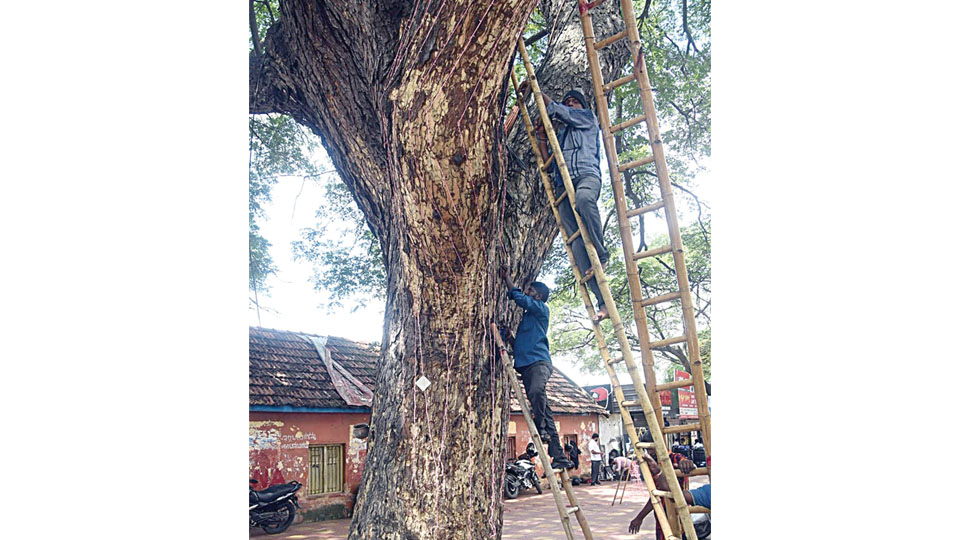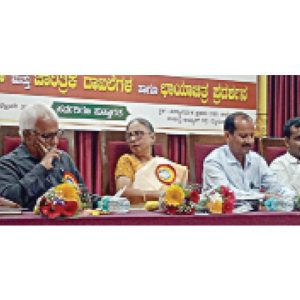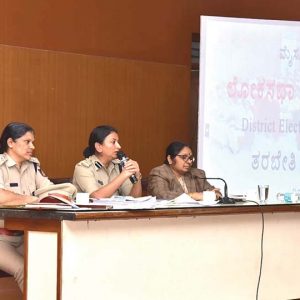Environmentalists call to halt practice of putting lights and using nails on trees
Mysore/Mysuru: The city is getting a bridal look for Dasara and this time, the State Government has approved 100 kms of illumination with an estimated cost of Rs. 5 crore.
While illumination increases the beauty of the city where circles, junctions, landmark buildings would be a cynosure of the eyes, it has upset the environmentalists as nails on trees would kill the trees eventually and destroy the nesting birds who prefer shady green trees.
Illumination involves lighting up trees too. Objecting to the practice, several environmentalists have asked the city administration to look into the matter and get the nails removed.
They said that trees have hundreds of nails hammered on them, along with many lights and strong LEDs of 500 watts and above which are hung over the trees.
“It is not just dangerous for the trees but it is cold-blooded murder of the birds and small insects that the tree houses. It is against the ecosystem. Sparrows are almost extinct and the squirrels and parrots will go extinct too,” said Rajkumar D. Devaraj Urs, Chief of Wildlife Conservation Foundation.
“We should be doing everything in our power to save our heritage green cover and not allow ruthless assaults on trees. Nails for advertisements and illumination and many other such activities must be checked,” he added.
The accumulated layers of threads and nails damage the bark of the tree and eventually cut off water flow by damaging underlying tissue in the bark. Even though the National Green Tribunal’s 2013 order made it illegal to use trees to illuminate and display banners and advertisements, people continue to do so, as tree trunks form ubiquitous, cost-free canvases for advertising and display.
These nails tear holes into the nervous system of the tree, which reduces the tree’s ability to manufacture food for itself, causing its lifespan to decrease. It also reduces the tree’s oxygen-giving capacity, say green groups.
“When we drive a screw or nail into the bark of trees, we are exposing the extremely delicate cambium, xylem and phloem to bacteria, viruses, bugs and fungi. While a tree will most likely survive this wound, it isn’t a great risk to take. This is especially true in the case of a young, new tree and an already diseased tree,” another Botanist said.








Recent Comments